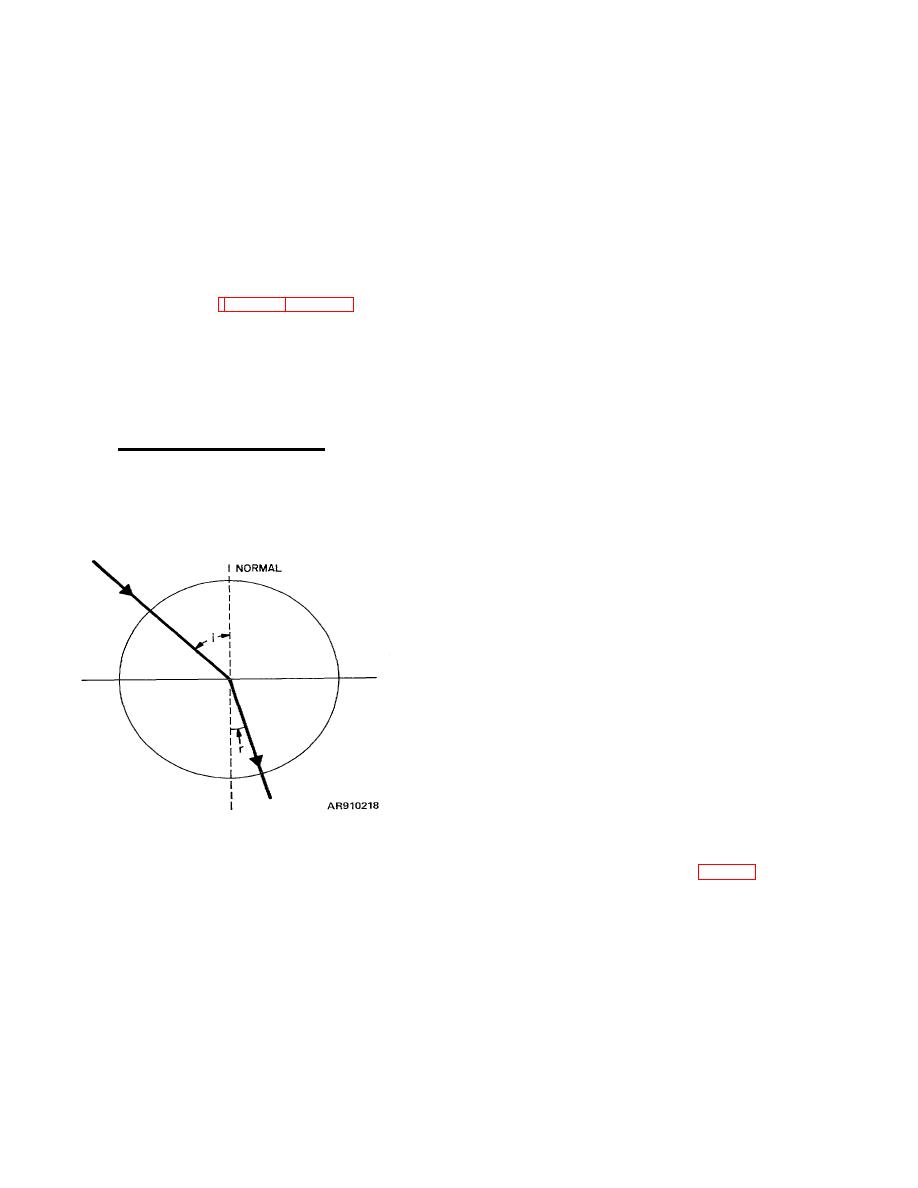 |
|||
|
|
|||
|
|
|||
| ||||||||||
|
|
 TM 9-258
Infinite - Without limit, as opposed to finite, meaning
calibration, graduation, or scale is set to indicate the
extent to which a mechanism is adjusted; something that
with limits.
Infinity - Distance having no end or limits. Greater than
points out.
b. The ratio of one dimension or quantity to
any assignable distance or quantity. In optics, the term
another.
is used to denote a distance sufficiently great so that light
Index of refraction - A number applied to a
rays coming from that distance are practically parallel to
one another. Infinity is indicated by the symbol ∞
transparent substance which denotes how much faster
light will travel in a vacuum than through that particular
substance. It is equal to the ratio between the speed of
wavelength lies just beyond the red end of the visible
light 'in a vacuum to the speed of light in a substance. It
spectrum, and the beginning of the region that can be
determines the relation between the angle of incidence
detected by microwave radio techniques.
Interpupillary - Between the pupils of the eyes.
one medium to another (figs 2-24 and B-18). The index
Interpupillary adjustment - The adjustment of the
between two media is called the relative index, while the
distance between the eyepieces of a binocular
index when the first medium is a vacuum is called the
instrument to correspond with the distance between the
absolute index of the second medium. The relative index
pupils of the eyes of an individual.
is the ratio of the sine of the angle of incidence to the
Interpupillary distance - The distance between the
sine of the angle of refraction, or the speed of light in the
centers of the pupils of the eyes. It is generally stated in
first medium to the speed of light in the second medium.
millimeters. It varies with the individual.
If the first medium is air, this relation is expressed as -
Inversion - Turned over; upside down so that top
= sin i = Speed of light in air
becomes bottom and vice versa.
It is the effect
n sin r Speed of light in other medium
produced by a horizontal mirror in reflecting an image.
(Snell's law)
Invert-type Image - The type of image observed in
where n equals very nearly the absolute index of
certain coincidence range finders. When in coincidence,
refraction, i equals the angle of incidence, and r equals
the upper half image appears to be the mirrored
the angle of refraction.
reflection of the lower half image.
Inverted image - Turned over; upside down. An
image, the top of which appears to be the bottom of the
object and vice versa. Usually refers to the effect of a
mirror, a prism, or lens upon the image.
Inversion is the effect of turning upside down. A plane
mirror held under an object will produce an inverted
image. The normal inverted image is seen upside down,
with the right side on the right. The reverted inverted
image is seen upside down with the right side on the left.
Iris -
The colored part of the eye about the pupil.
Depending upon the intensity of light, the iris causes the
pupil to dilate or contract.
Jack screw - A screw threaded through one part and
pressing against another. A jack (portable machine) in
which a screw is used for lifting or for exerting pressure.
Laser - Acronym for light amplification by stimulated
emission of radiation.
Law of reflection - The angle of reflection is equal to
Figure B-18. Index of refraction
the angle of incidence; the incident ray, reflected ray, and
normal all lie in the same plane (fig 2-13).
NOTE
Law of refraction - When light is passing from an
The index of refraction expressed in tables is the
optically lighter medium to an optically denser medium,
absolute index, that is, vacuum to substance at a
its path is deviated, toward the normal; when passing
certain temperature, with light of a certain
into an optically less dense medium,
Examples: vacuum, 1.00; air,
1,000293; water 1.333; ordinary crown glass,
1.517. Since the index of air is very close to that
of vacuum, the two are often used
interchangeably as being practically the same.
B-18
|
|
Privacy Statement - Press Release - Copyright Information. - Contact Us |